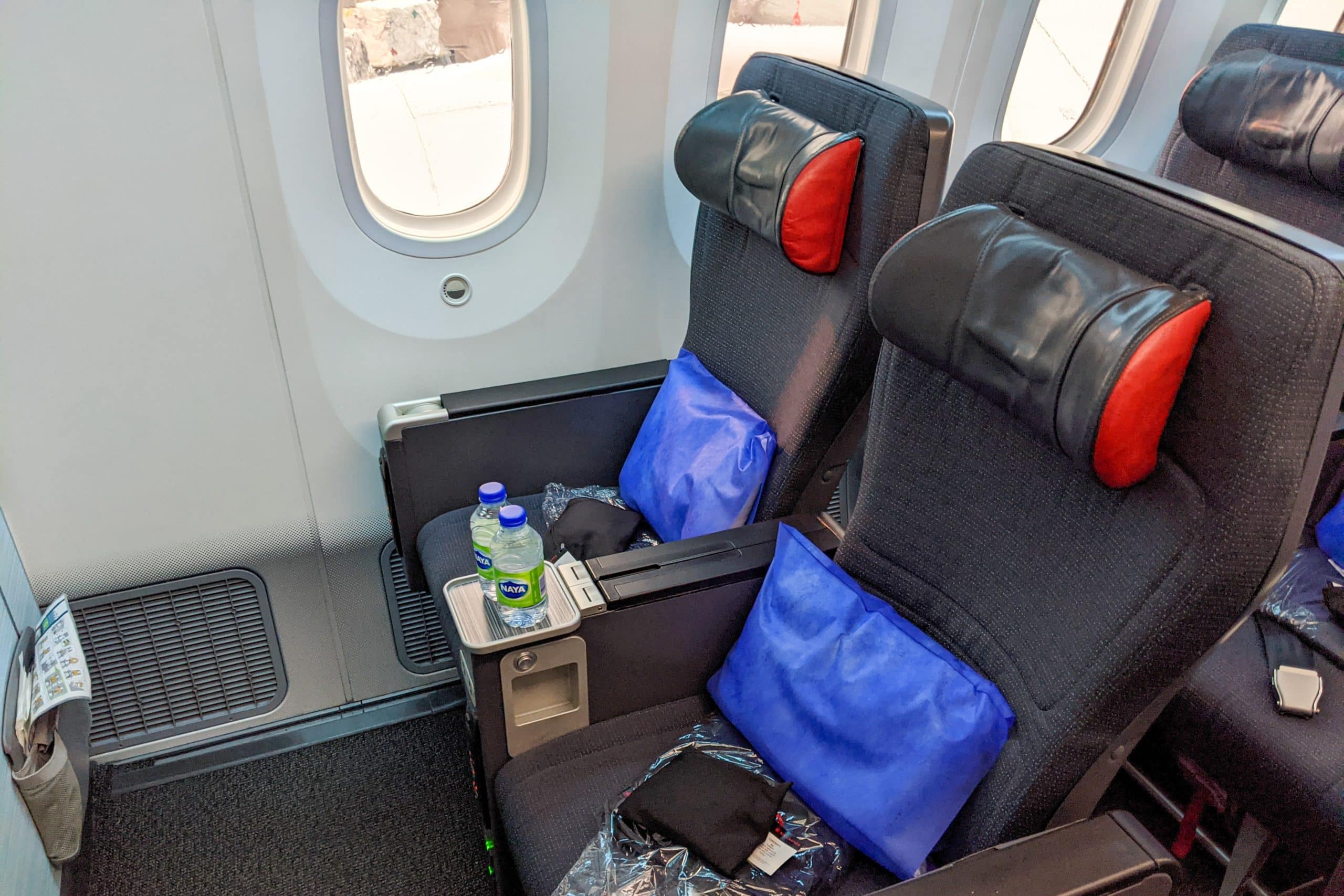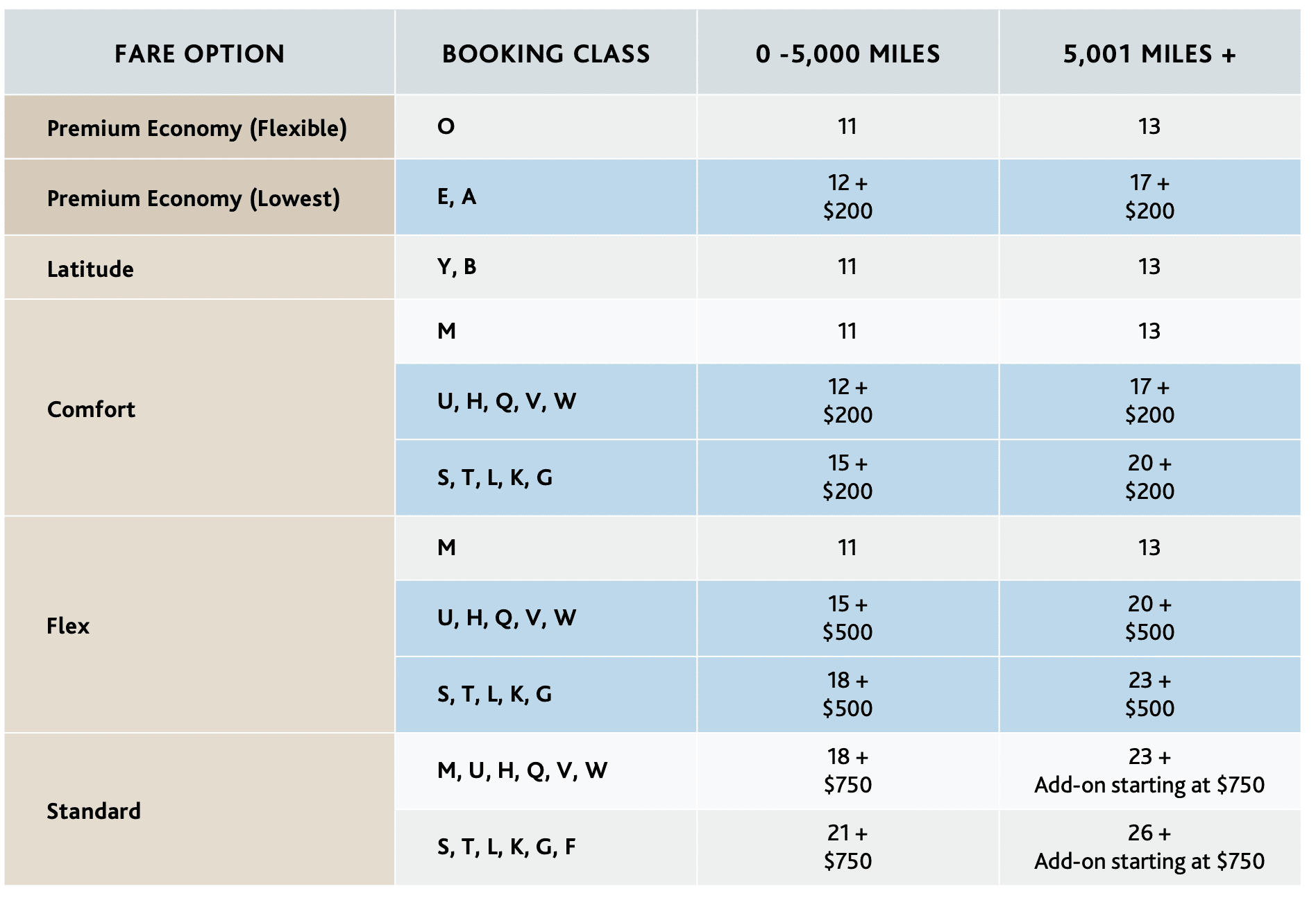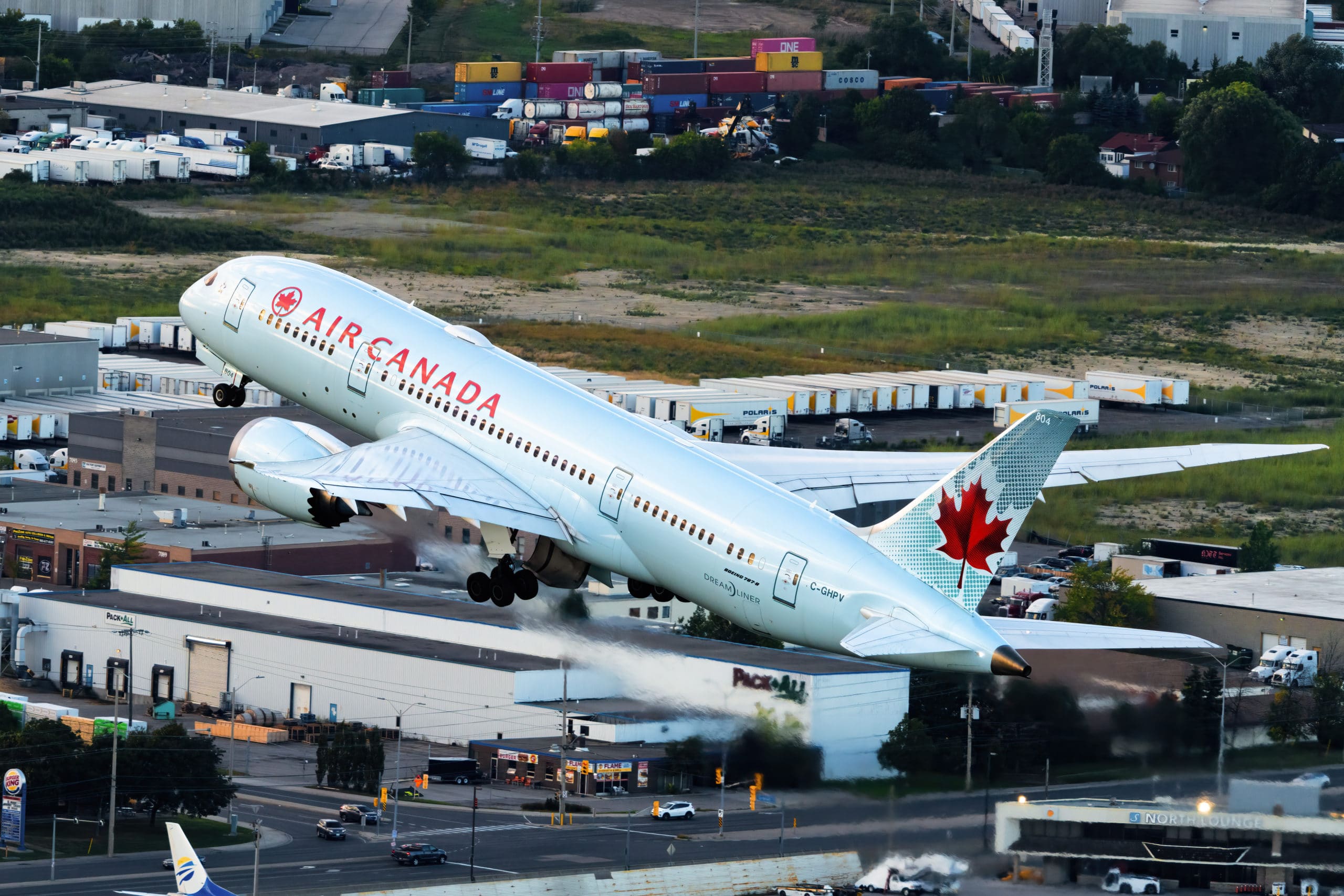There have been a lot of articles written about premium economy cabins lately. Many are negative, and use words like “overpriced” to describe the experience, and most are written by people who have flown it many times and can offer a better review than I can.
I recently flew premium economy for the first time, from Toronto (YYZ) to Amsterdam (AMS) with Air Canada. I didn’t want to be in the middle cabin, and I almost wasn’t. However, there was one seat in business class available, and I was number two on the upgrade list.
I didn’t particularly enjoy the experience, as I don’t like sitting in recliners on seven-hour flights. I really enjoy lie-flat seats, especially on red-eye flights, and I think Air Canada Signature Class is a compelling product.
However, at the end of the day, I don’t think premium economy is at all overpriced. I also think there’s exceptional value to be found for anyone with Aeroplan Elite Status, which you can get for free just by signing up for the Chase Aeroplan Card or through Everyday Status Qualification, and neither of which require you to ever set foot in an airplane.
The Premium Economy Experience
First, let’s discuss how the experience differs from regular economy for someone who enjoys status with Air Canada.
If you have the base-level 25K status, you’ll get priority baggage handling that you would not otherwise be entitled to. That’s about it for ground benefits, as your status already entitles you to everything else a ticket in premium economy includes.

By booking in premium economy to begin with, you also get the following benefits over travelling in the regular economy cabin:
- 1–3 inches of extra seat width (depending on aircraft type), affording you more room to reposition yourself for extra comfort
- 6–7 inches of extra seat pitch (depending on aircraft type), giving you substantially more foot and leg room
- 2 inches of extra seat recline, allowing you to lean back a bit further and hopefully get some better sleep
- A couple extra inches of armrest space, so that you’re not butting elbows with your neighbour the whole flight
- A better first meal service, which is very similar to what you’d get in the standard North American business class
- A power outlet at every seat (instead of between every seat), so there’s no fighting over electricity
- A bigger entertainment screen, so you can have a better experience watching TV and movies, in case you can’t sleep
While these perks are all great, I think the main benefits of premium economy for someone with elite status have to do with eUpgrades.
Premium Economy and eUpgrades
There are many benefits to booking in premium economy that extend beyond more legroom and a better meal. If you have eUpgrades at your disposal, booking in premium economy is your best bet for scoring an upgrade to business class.
eUpgrade Waitlist
What happens if your upgrade doesn’t clear in advance? You end up on the gate upgrade list, which is visible through the Air Canada app.

At the gate, the order of priority for upgrade is by cabin, then status, then fare, then check-in time.
That means that a base-level 25K booked in premium economy on an Aeroplan redemption is going to be waitlisted above me, a Super Elite Million Miler with a premium credit card, booked in Economy (Latitude) on a cash fare. Simply booking in premium economy to begin with could easily be the difference between being #1 on the list versus #20 if you were to book Economy (Flex).
eUpgrade Requirements
Recall that the number of eUpgrades required to upgrade from premium economy to Signature Class is dependent on the fare into which you booked.
For international flights, you’ll need 12 or 17 eUpgrade credits to upgrade to business class with a Premium Economy (Lowest) fare, or 11 or 13 eUpgrades if you’ve booked a Premium Economy (Flexible) fare. The number of eUpgrades required is the same whether you booked with cash or Aeroplan points.
There’s also a $200 add-on fee for Premium Economy (Lowest) fares, which is waived for Super Elite members.

If you were to book an Economy (Flex) fare instead, you might need as many as 23 eUpgrade credits to upgrade to Signature Class, as it depends on your specific fare class.
Additionally, unless you’re booking the highest Economy (Flex) fare, which will be substantially more expensive than Premium Economy (Lowest) to begin with, there’s a further $500 add-on fee, which is waived for Super Elite members.
And to boot, Premium Economy (Lowest) gives you 125% Status Qualifying Miles (SQM), compared to the 100% you’d earn with an Economy (Flex) fare.
Therefore, by booking in premium economy to begin with, you need fewer eUpgrades to move to business class, you have a lower add-on fee, and you earn more SQM.
If you book Economy (Standard), the numbers are even higher, and the add-on fee isn’t waived for Super Elites. And if you’re trying to requalify for status, Economy (Standard) only gives you 50% SQM.
Personally, I would never buy an Economy (Standard) fare for an international flight.
Does Premium Economy Really Cost More?
As with any airfare, the cost varies based on route, time, and availability. However, if you can be somewhat flexible and pick flights that have cheap Flex (“V” class) and Premium Economy (Lowest) (“A” class), here are some examples.
Note that the following examples only show the price for the outbound flight, but are based on round-trip fares.
Toronto (YYZ) – Tokyo Narita (NRT)
- Economy (Standard): $1,092 (CAD)
- Economy (Flex): $1,874 (CAD)
- Premium Economy (Lowest): $1,473 (CAD)
Toronto (YYZ) – Munich (MUC)
- Economy (Standard): $612 (CAD)
- Economy (Flex): $1,102 (CAD)
- Premium Economy (Lowest): $1,197 (CAD)
In my experience, these are pretty typical prices for Air Canada.
To Europe, Premium Economy (Lowest) fares are usually just slightly more expensive than Economy (Flex) fares.
When I had a work travel policy that only allowed flights to be booked in economy, I booked Economy (Flex), used that receipt for expense reimbursement, and then immediately changed the flight, where I paid roughly $95 (CAD) each way to up-fare to Premium Economy (Lowest).
When traveling to Asia, Premium Economy (Lowest) is often cheaper than Economy (Flex).
Given the add-on prices, even in the YYZ–MUC example, it’s almost the same price to buy and upgrade Premium Economy (Lowest) ($1,197 + $200 = $1,397) as it is to buy and upgrade an Economy (Standard) fare with an add-on ($612 + $750 = $1,362), and actually cheaper than Economy (Flex) with an add-on ($1,102 + $500 = $1,602).
So, if your goal is to sit in business class, buying Premium Economy (Lowest) and applying eUpgrades is a much better value proposition than paying for it outright.
But What If the eUpgrade Doesn’t Clear?
I wish that I had no experience with this, but I do. If your eUpgrade doesn’t clear, then you might have spent a bit more money than if you would have booked Economy (Flex) to begin with.
Alternatively, you still might have saved money – depending on your final destination, so to speak.
You might have spent more than Economy (Standard), but you also get more Status Qualifying Miles and Status Qualifying Dollars to help towards your status. Furthermore, you get free seat selection, and a few other perks to boot.
May I refer you back to the above section on “The Premium Economy Experience”. If your eUpgrade doesn’t clear, you’re still not sitting in economy, which is often the goal to begin with.
You’ll wind up with a substantially better seat and an upgraded meal. You still get a lot more than you would in economy.
And while I certainly can’t say that all of my eUpgrades from premium economy to business class have cleared, the vast majority have.
In fact, all but one (my recent Toronto–Amsterdam flight) have cleared, and the premium economy experience was decent enough that I’ll continue pursuing this strategy as an Air Canada frequent flyer who aims to sit in business class as much as possible.
Conclusion
Whenever I book an international flight with cash, Premium Economy (Lowest) is typically the fare I purchase. The enhanced eUpgrade priority alone is worth it for me.
If you have Aeroplan Elite Status, booking in premium economy is a way to reduce the cash cost of sitting in business class, while still maximizing earning and minimizing eUpgrade credit usage.
If your ultimate goal is to sit in Air Canada Signature Class, it’s a very reasonable price to pay, and it guarantees you a minimum standard that is far better than economy, while also drastically improving your upgrade chances and helping you towards next year’s status qualification.





















Was able to use this approach with prem economy. Had LHR-YYZ in sept in prem economy but had put in for e-upgrade. Got email a few days before that got into J. Was not expecting it, as only 25k level. Got to use the LHR MLL lounge too.
This strategy seems to ignore the e upgrade window and the benefit of the immediate e upgrade with a Lattitude fare. It is a great strategy if the immediate upgrade is not available or if the Lattitide fare is not in the budget. In the past year I have twice booked transatlantic on Lattitude with immediate upgrade, only to later cancel (with full refund) when Business Lowest became available at a lesser cost. This saved e upgrades and provided greater SQM. It is benficial to continue monitoring prices after booking in all cases.
My last flight YYZ – CUN was booked at the lowest Premium Eco using AP points.
When I tried to upgrade (use e-upgrades, or use cash) – the system told me my fare type is ineligible for an upgrade.
I am 25k member.
Is it possible that the lowest fare purchased wuth piints is ineligible for upgrades (including waiting list)?